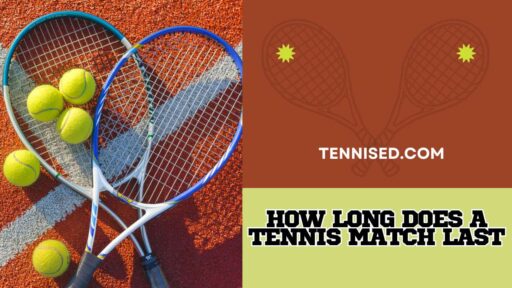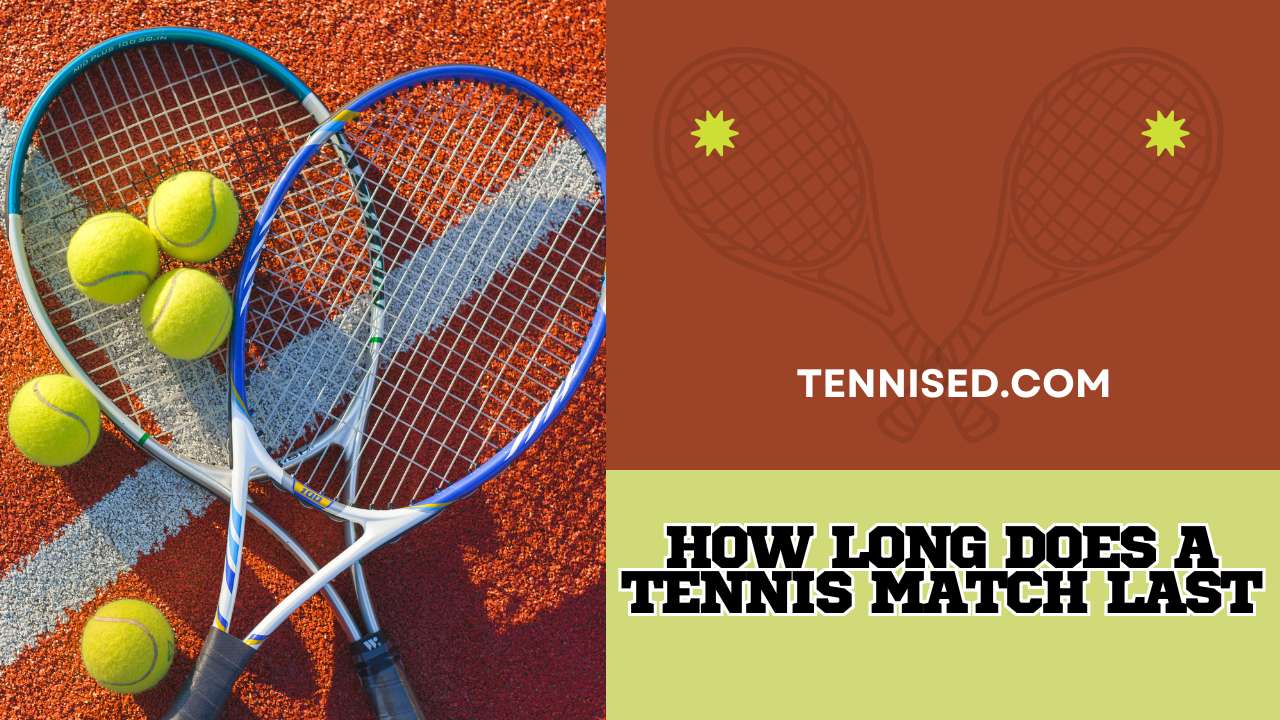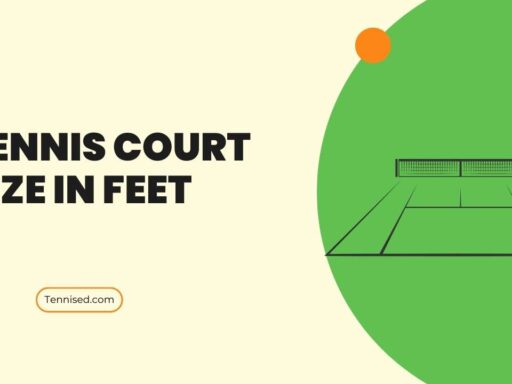Tennis can take anything from a few minutes to several hours, depending on how the game progresses. The question “How long does a tennis match last?” is one of the most commonly asked queries about this activity among fans and beginners. However, it is not a simple matter as it is influenced by many factors that determine the duration of such games. This comprehensive exploration highlights how long players spend battling each other on the court by considering average lengths, historical records, strategies, and play conditions that may increase or decrease the length.
Introduction to Tennis Matches
Tennis has some quite easy rules but allows for matches in different timeframes. Players hit over the net into their opponent’s court in such a way that they cannot return it to win points. The matches are divided into sets, which can then be broken down into games and points. While women play best-of-three sets, men compete in best-of-five set format during Grand Slam tournaments. Nevertheless, these formats can change across other competitions, resulting in fluctuations in match durations.
The beauty of tennis lies in its unpredictability and the sheer range of possibilities within a match. Tennis includes an array of skills, from serving game dominance to baseline rally artistry. Such variety makes tennis an exciting sport to watch and impacts the length of matches played. As we dig deeper, we realize that certain key aspects influence how long a game lasts.
Factors that Influence Match Length
The duration of matches depends on various factors. Among them include the type of court surface where slow clay courts result in longer games than grass or hard courts with faster balls being used respectively; player styles whereby powerful servers’ contest gets completed more swiftly because they involve multiple aces or unreturnable serves, whereas marathon ones occur when two baseliners clash.
Moreover, another factor contributing to the length of a match is the type of competition. Best-of-five set matches, commonly observed in men’s Grand Slam tournaments, can take much longer than best-of-three set matches. Furthermore, players’ psychology and physical conditions at the time of play, strategies adopted while playing, and even weather variations may determine how long they will stay on the court.
Average Length of a Tennis Match
It is extremely difficult to provide an exact average duration for tennis matches due to variability in match conditions and player attributes. However, recently held grand slams show that men’s singles last 2 to 4 hours while women take 1 ½-3 hours for their games (The Official Website of The U.S. Open Tennis Championships). Such durations reflect an intense level of competition requiring extraordinary physical and mental fitness to play at such a high level.
It should be noted that these are just means, with many matches falling outside these ranges. The nature of tennis, with its see-saw momentum and sensational comebacks, guarantees that no two games will ever be the same. This unpredictability has made it one of the most charming aspects of the game, drawing crowds and keeping them hooked from first serve to match point.
Cracking the Code of Epic Matches

Credit: www.pexels.com
Some notable examples come to mind when we think about long tennis matches. For instance, the 1988 Wimbledon final between Stefan Edberg and Boris Becker, which had rain delays and five-set thrills, or the 2010 Wimbledon final between Isner and Mahut, which lasted for 11 hours, are part of tennis folklore. What was peculiar about such matches in terms of time?
Historical Context
Enduring matches normally tell a tale beyond points. Both players and the audience are emotionally involved, converting a game into a play that appears to go on forever.
Statistics and Decisive Moments
Epic matches often have record-breaking statistics, such as rally marathons or the most aces served in history. They also create incidents in time when the scales incline either towards victory or loss.
The Human Element
Ultimately, what truly makes a match memorable is how it connects to human life experiences. The fights, the comebacks, and the sheer physical and mental strength on display resonate with audiences and ensure that time stands still in the hearts and minds of all those watching.
Longest Tennis Matches in History
There have been epic confrontations within tennis that push human limits, as recorded by its annals. As such, officially, the longest-ever known official game took place at Wimbledon in 2010, involving John Isner against Nicolas Mahut. This edition lasted for an incredible duration of eleven (11) hours over three days, making it one of those once-in-a-lifetime encounters. In fact, in this last set, the urgency was so high that Isner took it 70-68 at the end of the fifth set, which is astounding. This match obliterated records and highlighted the physical and mental resilience required at the game’s elite levels.
Other notable marathon matches include the 6-hour and 36-minute clash between Kevin Anderson and John Isner in the 2018 Wimbledon semifinals and the 6-hour and 5-minute duel between Novak Djokovic and Rafael Nadal in the 2012 Australian Open final. These matches test the players‘ incredible stamina and the sheer unpredictability of tennis match durations.
Shortest Tennis Matches in History
Notably, there have also been some extremely short games in tennis. One of the pro’s quickest occasions is reported as taking place during a Bill Scanlon vs. Marcos Hocevar contest held at the Delray Beach tournament in 1983. Scanlon won 6-0,6-0 within only twenty-two minutes. This was an exceptional happening as it occurred once or twice in professional court sports, meaning circumstances where everything went right for one player. At the same time, he struggled to find any rhythm in his opponent.
These quick clashes, although less frequent than their marathon equivalents, should serve as reminders that there can be utter domination within this sport. They emphasize how important it is to be mentally and physically ready when stepping onto a court because tennis can be a very unforgiving taskmaster with rewards.
Factors to Extend or Shorten the Duration of a Tennis Match
A few factors have a significant bearing on how long a game of tennis lasts, such as tactical moves by players like engaging in very long rallies from the baseline or going to net for quickly scored points. This mental part is also important; players with strong control of their emotions and focus can outlast opponents who are less mentally tough.
The serving game is another critical factor. Players with powerful, accurate serves can win games more quickly, potentially shortening the match. Conversely, matches with strong returners who constantly neutralize serves may see longer points and games. On another note, external conditions like heat, humidity, or wind can affect players’ stamina and strategy, resulting in longer matches.
What’s Behind Question of How Long Does A Tennis Match Last?
Several variables can influence the length of a tennis match, and these revolve around technical aspects and regulations governing the game. Below are some major factors determining how long a tennis match takes.
According to Game Rules
The duration of a tennis match depends on the format of the match subscribed to by competing players. A typical professional match consists of three or five sets at most, where each set is won by capturing at least six games ahead of your opponent for at least two leads. The score could be extended by using tie-breaks during the fifth set of the men’s major tournament.
Player Behavior And Style
This means that if a player plays aggressively this way, it will lead to shorter matches than one who plays defensively and tactically because they are good in defense rather than winning easily through attack, which, therefore, drags the length of play down. Players utilizing serve and volley tactics would rather serve strongly than dash towards net-ending matches quicker, while baseliners or counterpunchers (such as Nadal) engage in grueling, long rallies that test both the endurance and patience of their adversary.
Match Conditions
No wonder different courts like clay courts at Roland-Garros, grass courts at Wimbledon or hard surface used at US Open/Australian Open affects speed of the game and therefore length of match. Further, external elements such as climatic conditions, and court pace make predictions about how long a match could take more difficult.
Strategies to Make Tennis Matches Faster or Slower
Often, players employ particular tactics reflecting their strengths and weaknesses vis-à-vis their opponents in order to manipulate the tempo and duration of matches. For example, using slice serves and drop shots can break up the rhythm of a baseline player, thereby enabling one to win points faster. On the other hand, should they face an opponent with a strong serve, they might focus on prolonging rallies while saving energy for later when this serve will likely start losing its accuracy.
These strategies are carefully planned out by coaches and athletes who consider factors like type of surface, weather conditions or style of play from the adversary. The greatest competitors in this sport have been so because they were able to change course during contests even after intense preparations had been made which shows that there are great tactical layers affecting unpredictability in relation to how long a match could take.
Social And Economic Implications Of Match Length Beyond The Scoreline
The length of a tennis match creates ripples beyond the court. Broadcasters and audiences are accommodated in scheduling tournaments for instance, this is because TV broadcast hours are taken into account when deciding on tournament timing. A whole day’s timetable can be disrupted by one individual match that runs over-time leading to financial implications and viewer fatigue.
Television and Sponsorship
Broadcasters need longer games to have more materials to show, which may also complicate programming. In the world of media and entertainment, where time is money, it is important for advertisement slots as well as maintaining viewer interest.
Fan Experience
Those who watch live matches at stadiums or off their screens will agree that the duration of matches affects the overall experience. It means that it is not only players who spend too much time playing a game on earth since even supporters can get tired, emotionally drained or end up spending their whole day watching this kind of an extreme sport.
Economic Considerations
Sponsored deals, ticketing sales, and players’ remunerations are tied to how fast a game is played. The economics of sports become even more intricate when longer matches are advantageous for some people while harmful to others.
How Weather Conditions Affect the Duration of a Tennis Match
Conditions prevalent in the weather can greatly influence how a tennis match goes down. High temperatures could drain players’ energy reserves faster, resulting in shorter points and games as players try to save power, whereas cold weather might allow rallies to go longer, thereby making way for extended matches due to players sustaining high levels without overheating themselves.
The wind comes into play here as well, as it impacts ball trajectory, making serving and groundstrokes harder. Matches normally take longer times if played under windy conditions since players need more time to adjust themselves. Another variable includes rain delays, which disturb the normal flow of games, thus forcing participants back onto restart mode and extending the total period spent on the court.
The Impact of Player Skill and Style on Match Duration
Among these factors, the skill level and playing style of the competitors are probably the most important. Matches between equally talented opponents usually last longer because there are fewer easy points since players have to put more effort and strategies while winning points than they would in a setting where one person is better skilled. Furthermore, different playing styles may also lead to long matches for example; when a powerful server meets with an excellent returner, there might be multiple deuce games which prolongs this match.
On the other hand, a game could end very quickly if one player is significantly better than another. These factors interact together, making it difficult to forecast how long any given tennis match will take, adding to its appeal and mystique.
Frequently Asked Question
What factors determine the length of a tennis match?
Some factors that influence how long a tennis match lasts include:
- Match Format: The full-length format extends over three or five sets depending on whether it is best of three or best of five.
- Competitiveness: Players who are closely matched will tend to have longer matches because there would be many deuces and extended rallies as well.
- Court Surface: Points on clay courts typically last much longer as compared to those played on hard surfaces.
- Weather Conditions: It usually takes place outdoors, thereby climate becoming an indirect determinant of time spent in such events.
How long does a three-set tennis match typically last?
It generally takes around 1.5 – 2 hours for a three-set game however, this can change quite dramatically depending on those things mentioned earlier.
What about the duration of a five-set tennis match?
A match is often a five-setter that may last for about 2 to 4 hours. The longest matches in the history of tennis have extended over five hours, most famously in Grand Slam tournaments.
Why are tennis matches lasting longer today than in the past?
Yes, professional tennis has been marked by longer matches recently. This is due to a few factors such as players becoming more physical, improvements made to racquets and strings and slower court surfaces that favor lengthy rallies.
Conclusion
There are many things that affect how long a tennis match lasts, from the players’ physical condition to external ones like weather and court surface. Tennis is an unpredictable sport with strategic depth and requires a great level of physical fitness. The beauty of this game doesn’t lie only in its unpredictability but also through the unforgettable incidents of endurance and skills shown by its athletes. As we all fans or even participants can appreciate it further if we consider variables that might lengthen or shorten a game as well as remind us about the sophistication and interest connected with this kind of activity.






